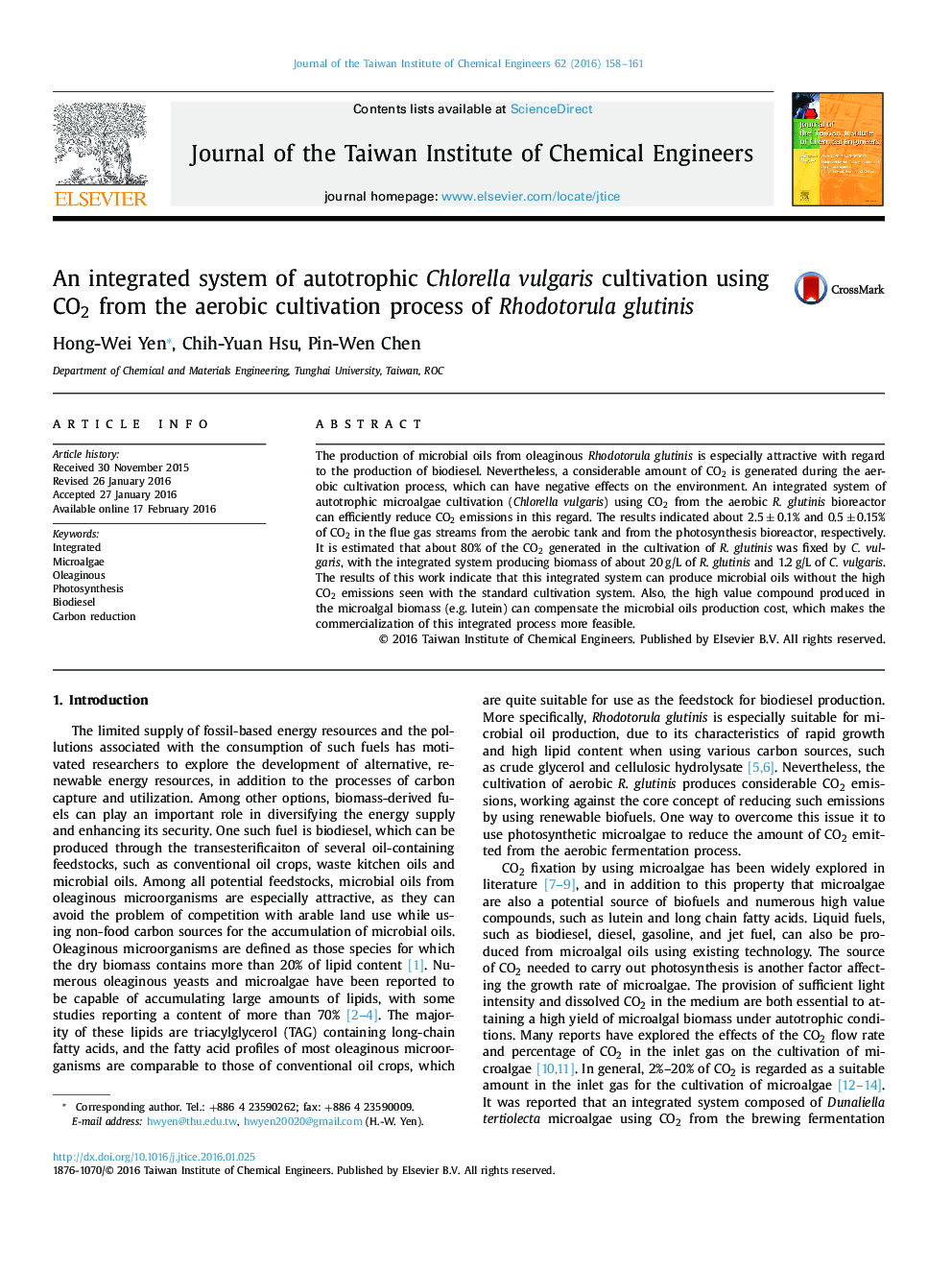| کد مقاله | کد نشریه | سال انتشار | مقاله انگلیسی | نسخه تمام متن |
|---|---|---|---|---|
| 690316 | 1460412 | 2016 | 4 صفحه PDF | دانلود رایگان |
• An integrated system of autotrophic microalgae cultivation (Chlorella vulgaris).
• 80% of CO2 generated in the cultivation of R. glutinis was fixed.
• This integrated system can have microbial oils produced without lots of CO2 emission.
• Coupling an autotrophic microalgae PBR with the aerobic fermenter can efficiently reduce 80% of CO2.
The production of microbial oils from oleaginous Rhodotorula glutinis is especially attractive with regard to the production of biodiesel. Nevertheless, a considerable amount of CO2 is generated during the aerobic cultivation process, which can have negative effects on the environment. An integrated system of autotrophic microalgae cultivation (Chlorella vulgaris) using CO2 from the aerobic R. glutinis bioreactor can efficiently reduce CO2 emissions in this regard. The results indicated about 2.5 ± 0.1% and 0.5 ± 0.15% of CO2 in the flue gas streams from the aerobic tank and from the photosynthesis bioreactor, respectively. It is estimated that about 80% of the CO2 generated in the cultivation of R. glutinis was fixed by C. vulgaris, with the integrated system producing biomass of about 20 g/L of R. glutinis and 1.2 g/L of C. vulgaris. The results of this work indicate that this integrated system can produce microbial oils without the high CO2 emissions seen with the standard cultivation system. Also, the high value compound produced in the microalgal biomass (e.g. lutein) can compensate the microbial oils production cost, which makes the commercialization of this integrated process more feasible.
Figure optionsDownload as PowerPoint slide
Journal: Journal of the Taiwan Institute of Chemical Engineers - Volume 62, May 2016, Pages 158–161
